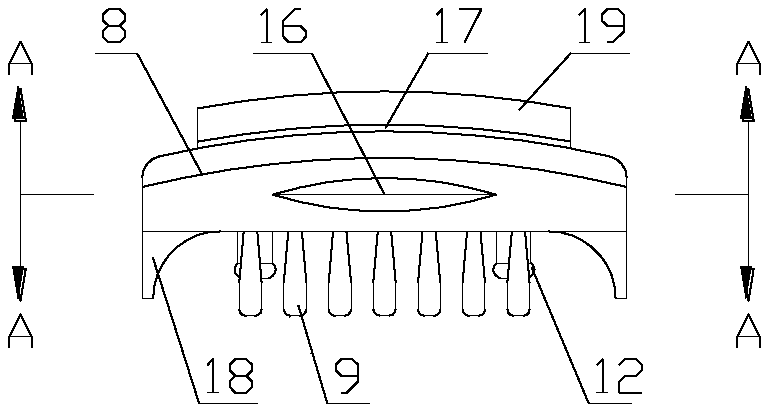Pond-pool resonance type qin
A resonance and string technology, applied in instruments, stringed instruments, percussion instruments, etc., can solve the problem of difficulty in meeting the requirements of performance, and achieve the effect of high volume and loudness
- Summary
- Abstract
- Description
- Claims
- Application Information
AI Technical Summary
Problems solved by technology
Method used
Image
Examples
Embodiment 1
[0104] 1. Pond resonance piano, including: small groove belly 1, small nayin 2.1, phoenix marsh 2.2, foot pond 3.1, foot hole 3.2, ground pillar 4, bottom plate 5, big nayin 6.1, longchi 6.2, sky pillar 7 , Qin forehead 8, Qin Zhen 9, Yunmao 10, Drum Nayin 11.1, Drum Hole 11.2, Yanzu 12, Dacao belly 13, Shengchi 14, Phoenix Crop 15, Phoenix Tongue 16, Chenglu 17, Protector 18 , Yueshan 19, string eye 22, string 23, dragon gum 24, piano emblem 26, panel 27, skin 90, outer pressure ring 91, inner pressure ring 92;
[0105] It is characterized by:
[0106] The top of the qin is a panel 27, and the panel 27 is shaped like a top arc and tile-covered (that is, the shape of the tile that is buckled upside down);
[0107] The downward surface of the panel 27 is concave;
[0108] Strings 23 are arranged on the upward surface of the panel 27, and there are 7 strings 23 in total. One end of the strings 23 is sparsely spaced, and the other end is closely spaced;
[0109] One end that t...
Embodiment 2
[0133] 1. The installation of the pond resonance type piano, the pond resonance type piano includes: small groove belly 1, small nayin 2.1, phoenix marsh 2.2, foot pond 3.1, foot hole 3.2, ground pillar 4, bottom plate 5, big nayin 6.1, dragon Pool 6.2, Tianzhu 7, Qin forehead 8, Qin Zhen 9, Yunmao 10, Drum Nayin 11.1, Drum Hole 11.2, Goose Foot 12, Dagou belly 13, Shengchi 14, Phoenix Crow 15, Phoenix Tongue 16, Cheng Lu 17, protector 18, Yueshan 19, string eye 22, string 23, dragon gum 24, piano emblem 26, panel 27, skin 90, outer pressure ring 91, inner pressure ring 92;
[0134] The top of the qin is a panel 27, and the panel 27 is shaped like a top arc and tile-covered (that is, the shape of the tile that is buckled upside down);
[0135] The downward surface of the panel 27 is concave;
[0136]Strings 23 are arranged on the upward surface of the panel 27, and there are 7 strings 23 in total. One end of the strings 23 is sparsely spaced, and the other end is closely spac...
PUM
 Login to View More
Login to View More Abstract
Description
Claims
Application Information
 Login to View More
Login to View More - R&D Engineer
- R&D Manager
- IP Professional
- Industry Leading Data Capabilities
- Powerful AI technology
- Patent DNA Extraction
Browse by: Latest US Patents, China's latest patents, Technical Efficacy Thesaurus, Application Domain, Technology Topic, Popular Technical Reports.
© 2024 PatSnap. All rights reserved.Legal|Privacy policy|Modern Slavery Act Transparency Statement|Sitemap|About US| Contact US: help@patsnap.com










